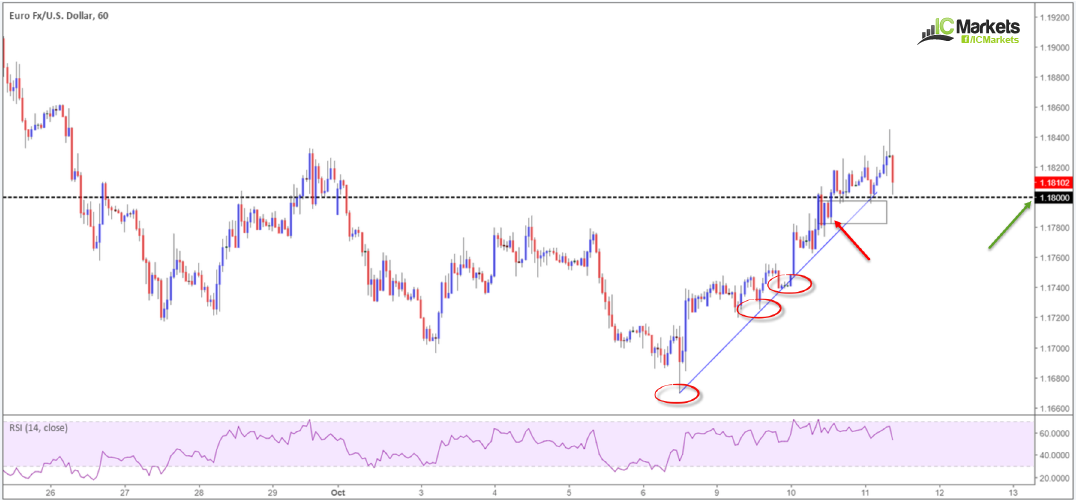Have you ever found yourself tempted to pull the trigger on a trade that did not meet your rules of engagement (your trading strategy rules)?
If you haven’t, then kudos to you! If you resemble the majority, however, then you have very likely been in this position more than once.
Despite the title, this will not be another article discussing the different forex trading strategies. There are already plenty of those! Instead, the aim of this piece is to introduce a point-scoring process to determine first-rate setups.

Why do so many fail in this business?
A successful trader’s toolbox carries a wide array of tools. Why traders fail to achieve their goals likely comes down to the following:
- The NEED to win and be right all of the time.
- Failure to apply sound risk and money management principles.
- Having little understanding of trading psychology.
- Not having a trading plan.
- Not following your method’s rules.
A way forward
What we’re about to introduce is not new, but it does offer traders a solution to help fix point five noted above. As a matter of fact, we’ve come across numerous traders who adopt this method successfully.
To help avoid confusion, we’re going to explain using an example…
Let’s say that trader A’s strategy is comprised of the following points:
- Supply/demand.
- Psychological whole levels (1.32 etc.).
- Trendline support/resistance.
- RSI divergence.
- In line with the immediate trend.
- H1 timeframes and above.
- Only major currency pairs.
How difficult can it be to follow this? Simply wait for all 7 points to converge and pull the trigger. Remove the financial aspect, and, we’re sure you’ll agree, it would be a relatively simple method to follow for just about any reasonably skilled technician. Since trading involves real money, however, and us humans being the emotional mammals that we are, following these rules can become surprisingly difficult.
Let’s look at a setup that recently formed on the EUR/USD H1 chart (see below) that boasted the following confluence:
- Trendline support.
- A nice-looking demand area (see red arrow).
- A round number (green arrow).
What it lacked, according to the method printed above, was CLEAR RSI divergence and not in line with the immediate trend.
Despite the setup not fulfilling trader A’s criteria, it worked like a charm. Price even printed a fresh high! Assuming that you were trader A for a moment, would you have taken the trade knowing that it did not satisfy all of the rules? Reading this article in a relaxed state the answer, we hope, should be no. But, say you had recently suffered two losses and had a good feeling about the setup, would you have taken the trade then? Maybe? What about if the setup was trading with the immediate trend but still lacked RSI divergence?
Imagine you had taken the trade highlighted above and, as per the chart, provided a win. Great, right? No!
Unfortunately, on the next trade your subconscious may take over and believe that because the trade won last time (while not satisfying trade rules) it’ll do it again, which is a very dangerous cycle.
What if the above trade was a loser? Well, you’d be kicking yourself for not following your method’s rules, and vow never to do it again. But would you?
A way to overcome these questions is to enter strictly based on points.
In the case of trader A’s method, if all 7 points are in line with each other; this would be a no-brainer trade. Therefore, the rules of engagement could be structured as follows:
No-brainer trade (7/7):
- H4 supply/demand.
- Psychological whole levels (1.32/33/34 etc.).
- Trendline support/resistance.
- RSI divergence.
- With the immediate trend.
- H1 timeframes and above.
- Only major pairs.
Strong-looking (optional) setup (6/7):
- H4 supply/demand.
- Psychological whole levels (1.32/33/34 etc.).
- RSI divergence.
- With the immediate trend.
- H1 timeframes and above.
- Only major pairs.
If you were to enter a trade based on either of the two setups above, would you feel down or angry after a loss? Highly unlikely as it is your plan, which should have been back tested to validate it has positive expectancy. If you were to take a setup that resembles only 5 or even 4 out of the 7 points because you had a good feeling about the setup, then you would, in our humble view, be treading on thin ice.
What’s great about the point-scoring process is that not only is it simple to adopt, it can also be used for both entry and exit strategies.
To conclude…
One of the key reasons behind traders failing to achieve success in this business is, as highlighted above, not correctly following their methodology. By using a point-scoring method it is quick and easy to see if a trade is viable or not. As long as you respect what the numbers are telling you, you’ll be amazed at the difference it makes not only to your discipline but also your bottom line.
[wpi_designer_button id=23206]





